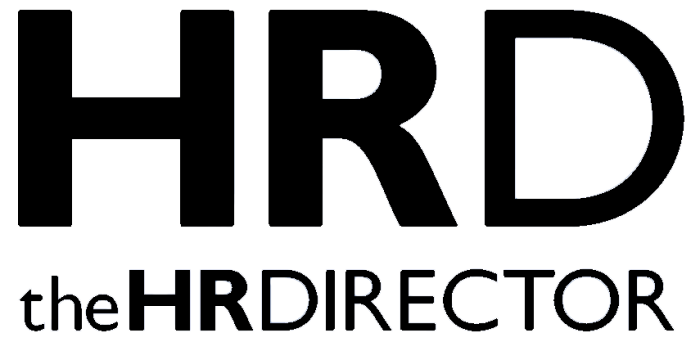Managing a global workforce is no small feat. With businesses expanding into international markets and remote work remaining popular, navigating payroll, compliance, and employment challenges can feel overwhelming. The right Employer of Record (EOR) model can transform this complexity into a streamlined process, but which option is best for your organization: EOR software or a full-service EOR provider?
Each model offers distinct advantages depending on your needs. EOR software provides tools for businesses to handle employment processes independently, while full-service EOR providers take on the entire employment lifecycle. Choosing the right solution can enhance compliance, reduce administrative burdens, and create a smooth workforce management experience.
What Is EOR Software?
EOR software is a self-service platform designed to empower businesses to manage key employment functions like payroll and compliance. By offering tools and automation, this model gives HR teams the ability to oversee workforce management with less reliance on external providers, though you can outsource these functions to an EOR service provider.
Key Features of EOR Software
- Automated payroll management: Process payroll across multiple countries with efficiency and accuracy.
- Compliance support: Access resources to navigate local employment regulations.
- Internal implementation: Relies on your HR team to implement solutions.
- Minimal human interaction: Most platforms offer limited live support, emphasizing self-service.
Who Benefits Most From EOR Software?
This model works best for small to medium businesses with robust HR, payroll, and legal infrastructures already in place. If your team has the expertise and bandwidth to handle compliance nuances, EOR software offers a direct way to manage international employment needs without extensive configuration or customization.
However, there are challenges to consider:
- Compliance complexity: Employment laws often vary significantly between regions. EOR software provides valuable guidelines, but nuances — like specific worker protections or taxation rules — can be missed. Engaging local legal experts is essential to avoid noncompliance penalties.
- Worker misclassification risks: Misclassifying employees as independent contractors is a common issue, and not all platforms offer strong vetting processes to address this risk. Misclassification can lead to costly fines and reputational damage.
- Limited customer support: Software solutions are designed to minimize costs, often at the expense of live assistance. If issues arise, particularly with payroll or compliance, resolving them without a dedicated expert can slow down operations and increase frustration.
When to Transition to a Full-Service EOR
You may outgrow EOR software if your organization struggles with scalability, compliance, or employee satisfaction. For example, businesses expanding rapidly across multiple countries may require more hands-on, strategic support than software can provide.
What Is a Full-Service EOR Provider?
Full-service EOR providers go beyond tools and automation to offer comprehensive employment management (https://www.innovativeemployeesolutions.com/blog/how-an-employer-of-record-fuels-business-growth-real-world-success-stories/). By acting as the legal employer for your global workforce, they handle everything from onboarding and payroll to compliance and offboarding.
Key Features of EOR Service Providers
- End-to-end employment management: Includes payroll, benefits, and compliance.
- Dedicated expertise: Access to specialists who understand local labor laws and global workforce management, with strategic support across time zones.
- Risk mitigation: Providers take on legal responsibility for compliance, reducing your exposure.
Who Benefits Most From Full-Service EOR Providers?
Organizations without a strong internal HR infrastructure — or those expanding into unfamiliar regions — will find full-service EORs invaluable for their consultative approach. This model is particularly advantageous for medium to large businesses managing complex workforces, including contingent workers like freelancers or fixed-term contract employees.
This model is also ideal for companies seeking tailored or customized solutions to align with specific business or project needs. Whether it’s scaling quickly in new markets or ensuring compliance for a global contingent workforce, full-service EORs provide the hands-on expertise needed to navigate international employment challenges (https://www.thehrdirector.com/create-sustainable-global-workforce/).
Comparing EOR Software and Full-Service EOR Providers
| Feature | EOR Software | Full-Service EOR |
| Level of support | Self-managed | Managed by dedicated experts |
| Cost structure | Lower upfront costs, more internal resources required | Higher fees, minimal internal burden |
| Compliance management | Provides tools, but the business must execute | Provider assumes full responsibility |
| Scalability | Best for limited growth | Ideal for global expansion |
Compliance Risks to Consider
Regardless of the EOR model you choose, compliance is a critical factor. Missteps can lead to severe penalties, financial losses, and even damage to your company’s reputation. Here’s how compliance risks differ between EOR software and full-service EOR providers:
- EOR software risks:
- Worker misclassification may occur due to insufficient vetting processes.
- Noncompliance with specific regional regulations, such as tax laws or required employee benefits, can result in fines.
- Lack of proactive support to address potential risks.
- Full-service EOR risks:
- While these providers handle compliance proactively, selecting the wrong partner can lead to hidden fees or service limitations.
In some cases, noncompliance could jeopardize your business license or result in criminal penalties.
Deciding Between EOR Software and Full-Service EOR Providers
To choose the right EOR model, consider the following factors:
- Size and scope of your workforce: Are you managing employees across multiple countries? If so, the hands-on support of a full-service EOR may outweigh the cost savings of software.
- Internal resources and expertise: Does your HR team have the legal and compliance knowledge to navigate global employment regulations? If not, full-service, global Employers of Record provide the guidance you need to stay compliant.
- Budget considerations: EOR software typically costs $300 to $600 per employee per month, making it more affordable upfront. Full-service EOR providers range from $500 to $1,500 per employee per month but offer a more transparent pricing structure and fewer hidden costs.
- Business goals: Are you looking for an out-of-the-box solution or a tailored, high-touch approach? Full-service EORs excel in customization and scalability, while software offers flexibility and control for cost-conscious businesses.
Checklist for Decision-Making
- Is your workforce spread across multiple countries?
- Do you manage contingent workers, like independent contractors or project-based employees on fixed-term contracts, temporary workers, etc.?
- Are compliance risks, such as worker misclassification, a concern?
- Does your organization lack in-house HR or legal expertise?
- Are you seeking high-touch support for workforce expansion?
If you answered “yes” to most of these questions, a full-service EOR is likely the better option.
The Future of EOR Workforce Management Solutions
As workforce needs continue to evolve, the lines between EOR software and full-service EOR providers may blur. Full-service providers are likely to adopt more self-service features, creating a hybrid model that combines the flexibility of software with the personalized support of traditional EORs. This shift will empower businesses to manage their global workforces more efficiently while maintaining access to expert guidance when it matters most.
Ultimately, choosing between EOR software and full-service EOR providers depends on your business’s specific needs, resources, and goals. While software offers flexibility and cost savings, full-service EORs provide peace of mind through end-to-end support and compliance management.
By understanding your organization’s current capabilities and future aspirations, you can select the EOR model that ensures smooth workforce management and sets you up for long-term success.









